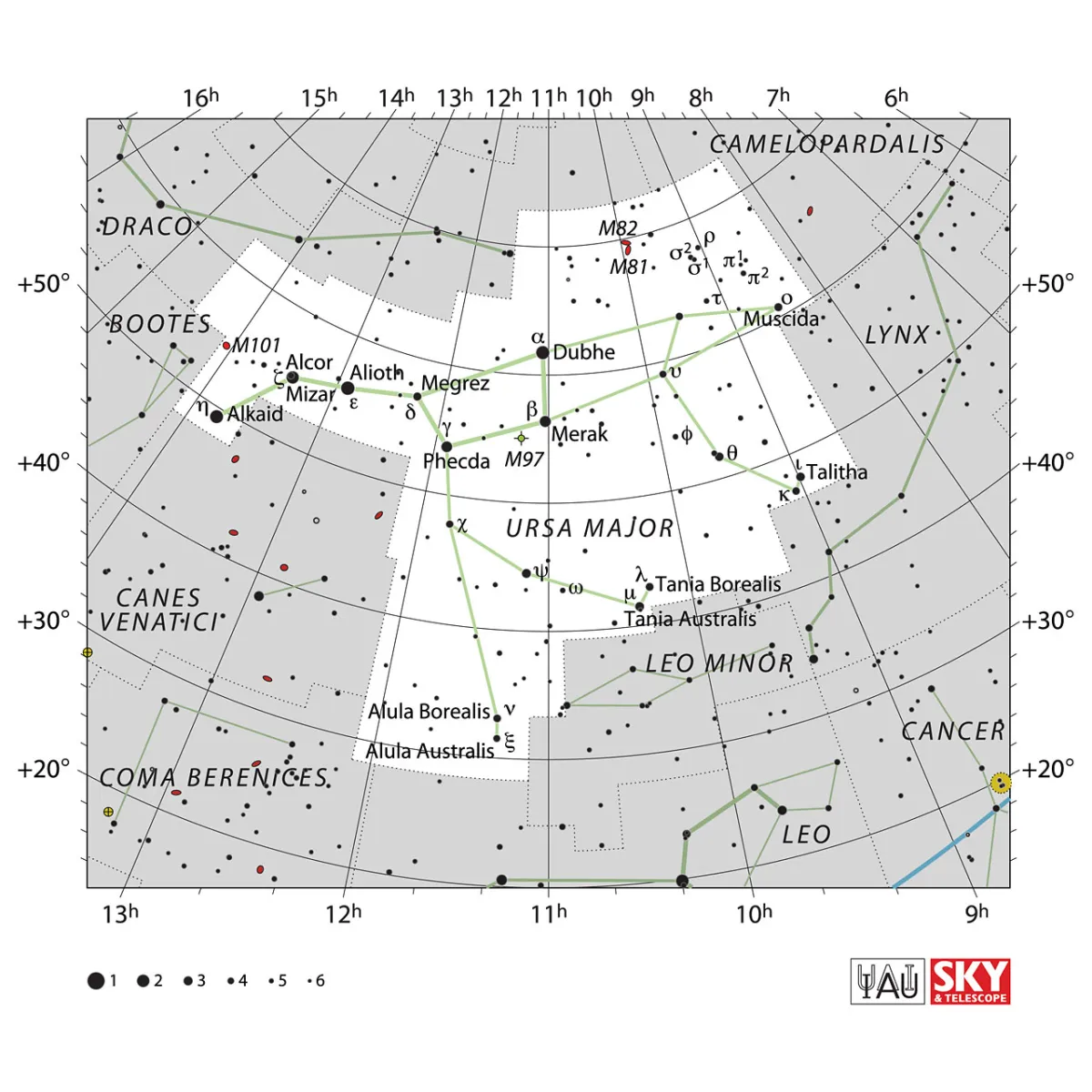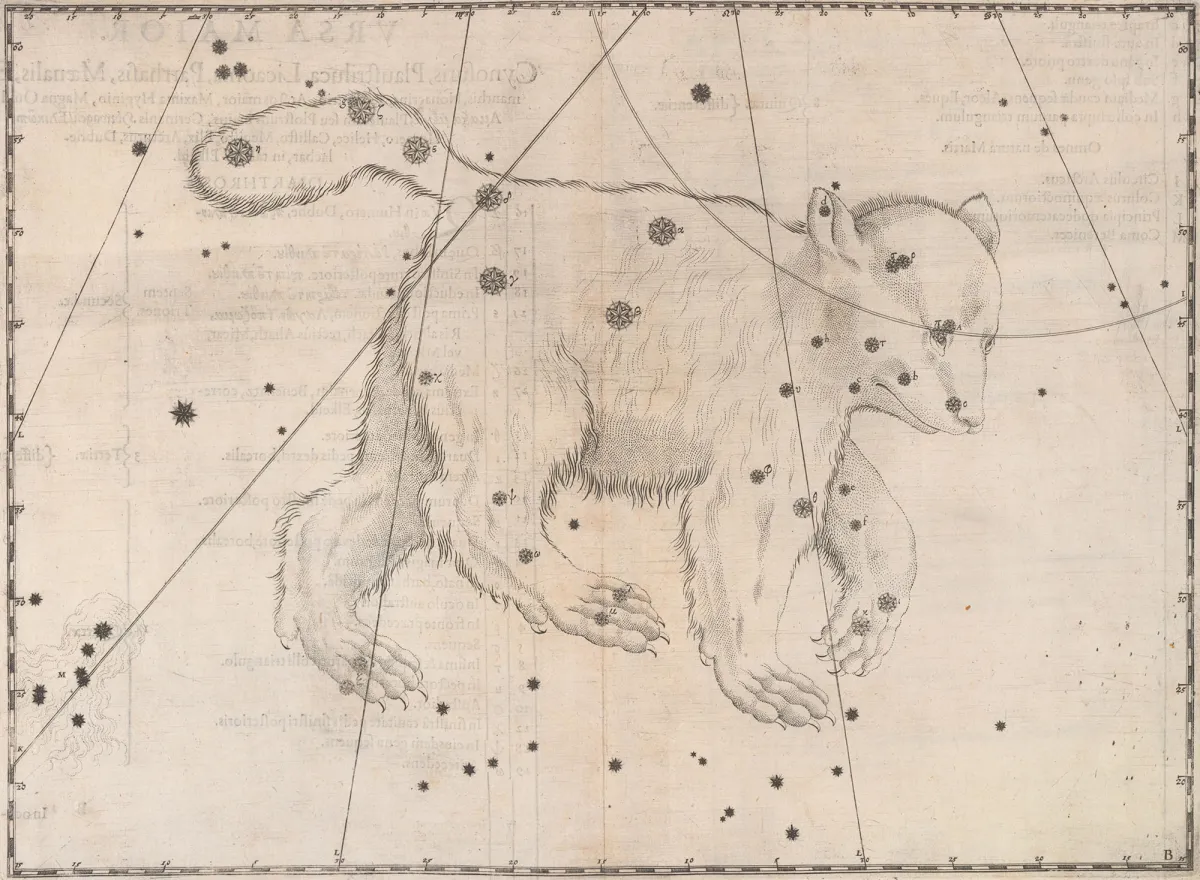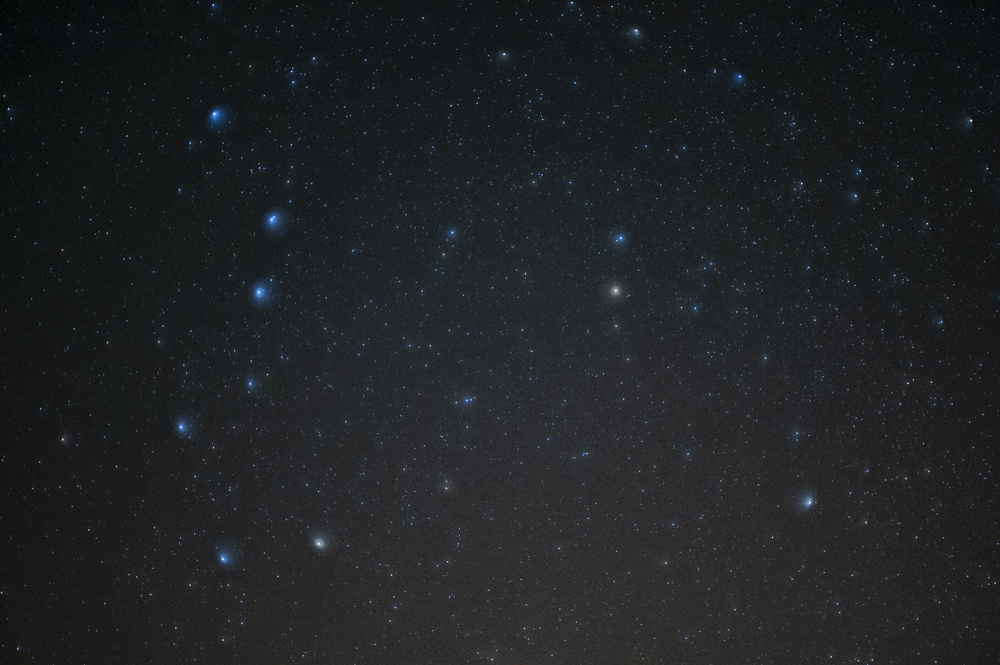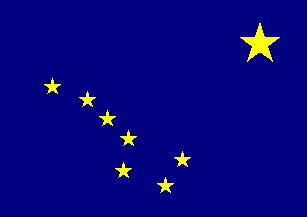Constellation Ursa Maior (Great Bear)

Properties
Ursa Maior is the third largest constellation in the sky with 1280 square degrees. The alignment of the Big Dipper contained therein is probably the best known. Some also see a large ladle in it, which is dipped in in summer and tipped out in winter. In the very dark and clear nights of late winter and early spring, when the constellation is high in the sky, the whole bear with its head, front and back paws can also be clearly seen. If you extend the last two stars of the car body α and β Ursae Maioris by five times their distance to the north, you come across Polaris, the Pole Star . The curved curve of the drawbar can be continued up to Arcturus in the constellation Bootes and even further up to Spica in the constellation Virgo. The second drawbar star, Mizar, is a physical double star, but forms an optical double star together with the weaker Alcor. The centre of Ursa Maior culminates around midnight on March 11th. [9, 15]
| α UMa | Dubhe, Dubb, Ak |
| β UMa | Merak, Mirak |
| γ UMa | Phad, Phecda, Phekda, Phegda, Phekha, Phacd |
| δ UMa | Megrez, Kaffa |
| ε UMa | Alioth, Aliath |
| ζ UMa | Mizar, Mizat, Mirza |
| η UMa | Alkaid, Benetnash, Benetnasch, Elkeid |
| ι UMa | Talitha, Talita |
| λ UMa | Tania Borealis |
| μ UMa | Tania Australis |
| ν UMa | Alula Borealis |
| ξ UMa | Alula Australis |
| ο UMa | Muscida |
| π1 UMa | Muscida |
| π2 UMa | Muscida |
| HR 4550 | Groombridge 1830 |
| 80 UMa | Alcor, Saidak |
| IAU Name | Ursa Maior |
| IAU Genitive | Ursae Majoris |
| IAU Abbr. | UMa |
| English Name | Great Bear |
| Culmination at local midnight | 28 February |
| Season (Latitude +0.0°) | November … August |
| Right Ascension (J2000.0) | 08h 08m 31s … 14h 29m 00s |
| Declination (J2000.0) | +28° 18' 14" … +73° 08' 18" |
| Area | 1280 deg2 |
| Neighbours (N↻) | Dra, Cam, Lyn, LMi, Leo, Com, CVn, Boo |
Deep-Sky Object Descriptions
Messier 40
Messier 81
Messier 82
Messier 97
Messier 101
QSO 0957+561A/B
Catalogues

Mythology and History
The king of the gods, Zeus (Jupiter), fell in love with a beautiful woman, as he has so many times. This time his new love was the pretty Callisto, the daughter of the cruel King Lykaon of Arcadia. Kallisto then became pregnant and gave birth to a son, Arkas.
One day Zeus was invited to dinner in the palace of Lykaon, but Lykaon wanted to check whether his guest really was the mighty Zeus. He dismembered his grandson Arkas and then served him as a meal for Zeus. However, he immediately recognized the flesh of his poor son. In a furious rage, he killed Lycaon's sons in a flash and turned Lykaon himself into a wolf, whom he took to the sky, where he was greeted by the Centaurs being kept in check. Then Zeus put the parts of his son back together and handed him over to the Pleiade Maia, who raised him.
When Zeus' jealous wife Hera found out about her husband's renewed relationship, she turned poor Callisto into a she-bear. Arkas grew up to be a young, skilled hunter. One day he met the she-bear while hunting. Callisto recognized her son, but could only greet him with a grunt. She straightened up to hug him for joy. But Arkas only saw one she-bear, whose claws and sharp teeth and how threateningly straightened up. He then chased her, who fled to the temple of Zeus. This was a forbidden place and entering it was punishable by death. Zeus seized both of them and placed the she-bear in the sky as Ursa Maior and Arkas as Bootes.

According to another interpretation of the same story, Zeus intervened at just the right moment when Arkas met the she-bear and wanted to kill her. He also turned Arkas into a bear, grabbed both of their tails and hurled them into the sky - Callisto as the Big Bear and Arkas as the Little bear. This explains why the two sky bears, unlike their earthly relatives, have so long tails. [20]
Some North American Indian tribes saw things differently. They also drew a bear in Ursa Maior, as well as in the neighboring Ursa Minor and named them Okuri and Paukunawa, which both times means something like bear. But in Iroquois mythology, all bears once had long tails. However, the terrestrial bear lost his when he tried to catch fish through a hole in the ice sheet of a lake. The hole froze and the bear was trapped. To break free, he tore his own tail off. Since then all earthly bears have; just a short tail.
A Blackfoot Indian legend tells of an older daughter in a large family. She fell in love with a grizzly bear. When her father found out, he became angry and caused his sons to kill him. But this bear was no ordinary bear, it was a magical bear and before he died he passed on some of his magic to his bride. She then transformed herself into a grizzly bear and in retaliation for the death of her lover, she destroyed her own village, killed her father and mother, and then hunted down her eight siblings. But one of these siblings had a little magic of his own; he shot an arrow in the sky and immediately all eight children followed and became stars in the sky. The seven oldest became the seven stars of the Big Dipper and the eighth and youngest was so anxious that she constantly pushed herself to an older sibling and thus became the little star Alcor who is standing next to Mizar. [68]
The great bear is one of the most famous constellations and all classical writers have written about it. This constellation was important in many cultures and the multitude of names is an impressive testimony to this.

The Greek word for bear is Arktos, from which our term Arctic is derived, because the Big Bear can always be seen there. [68] Apparently the Romans did not see the entire constellation, but only that part that we now call the Big Dipper. The seven stars were the Septemtriones (the 7 threshing ox), which continuously revolve around the axis of rotation of the celestial pole. The northerners interpreted this constellation as Wodan's chariot and the Central Europeans as the chariot of the legendary King Arthur or Charlemagne. The Arabs saw the box of the big wagon as a coffin behind which the three mourners walk.
A selection of names is listed here: Kallisto, Virgo Nonacrina (Arcadian virgin), Tegeaea Virgo (Tegeatic virgin), Ursus (bear), Arktus, Plaustrum (truck), Plostrum Magnum, Big wagon , Karl Wagen, Wodanswagen, Himmelswagen, in America Big Dipper (large ladle), in southern France Casserole, Okuari (bear) and others. [20]
The seven stars of the Big Dipper and the Pole Star also adorn the state flag of Alaska, which is the northernmost state in the U.S.A. From there, this constellation stands high above the horizon all year round. The design came from a thirteen-year-old orphan named John Bell (Benny) Benson. He designed this flag as a result of a state-wide competition sponsored by the Alaska Department of the American Legion. He was awarded the prize in 1927, and in the same year his design was introduced as the official flag of Alaska. [137]